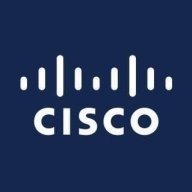


Cisco Intersight and Morpheus are leading players in the hybrid cloud management solutions category. Cisco Intersight has a slight edge in integration capabilities and automation features, while Morpheus outperforms with flexibility and multi-cloud management.
Features: Cisco Intersight offers comprehensive infrastructure lifecycle management, seamless Cisco hardware integration, and robust automation features. Morpheus provides strong multi-cloud management, extensive automation capabilities, and a highly flexible integration platform.
Room for Improvement: Cisco Intersight could enhance its cross-platform compatibility, expand third-party integrations beyond Cisco offerings, and improve ease of use in non-Cisco environments. Morpheus could benefit from refining its user interface, enhancing support for single cloud strategies, and reducing reliance on third-party tools for basic cloud management functions.
Ease of Deployment and Customer Service: Cisco Intersight ensures smooth deployment in Cisco environments, supported by proactive customer service. Morpheus supports fast deployment across various infrastructures, offering versatile customer support options to address diverse setups.
Pricing and ROI: Cisco Intersight provides a competitive pricing model with potential for high ROI through optimized Cisco infrastructure use. Morpheus, although possibly higher in initial cost, promises better ROI due to comprehensive multi-cloud compatibility and advanced features.



IBM Turbonomic offers automation, planning, and right-sizing recommendations to streamline resource management, improve efficiencies, and optimize costs across virtualized environments and cloud platforms.
IBM Turbonomic is valued for its capability to optimize resource allocation and monitor virtual environments efficiently. It facilitates automated decision-making in VM sizing, load balancing, and cost optimization for both on-premises and cloud deployments. Users can leverage insights for workload placement, ensure peak performance assurance, and effectively right-size across VMware and Azure. The ongoing transition to HTML5 aims to improve visual and navigational ease, while expanded reporting features are anticipated. Opportunities for improved training, documentation, and integrations enhance platform usability and functionality.
What Are the Key Features?In finance, IBM Turbonomic aids in maintaining platform efficiency during market fluctuations. Healthcare organizations leverage its capability for resource optimization during high-demand periods to enhance patient care support. Retailers use it for planning in peak seasons, ensuring resources align with fluctuating demand to maintain performance continuity.
Cisco Intersight is Cisco’s systems management platform that delivers intuitive computing through cloud-powered intelligence. This platform offers a more intelligent level of management that enables IT organizations to analyze, simplify, and automate their environments in ways that were not possible with prior generations of tools. This capability empowers organizations to achieve significant savings in Total Cost of Ownership (TCO) and to deliver applications faster, so they can support new business initiates. The advantages of the model-based management of the Cisco UCS platform plus Cisco Intersight are extended to Cisco UCS servers and Cisco HyperFlex and Cisco HyperFlex Edge systems. Cisco HyperFlex Edge is optimized for remote sites, branch offices, and edge environments.
Morpheus is a 100% agnostic cloud management platform (CMP) designed from the ground up to unify management of multi-cloud and hybrid IT while empowering DevOps teams with self-service provisioning of bare metal, VM, and container-based application services.
We monitor all Cloud Management reviews to prevent fraudulent reviews and keep review quality high. We do not post reviews by company employees or direct competitors. We validate each review for authenticity via cross-reference with LinkedIn, and personal follow-up with the reviewer when necessary.